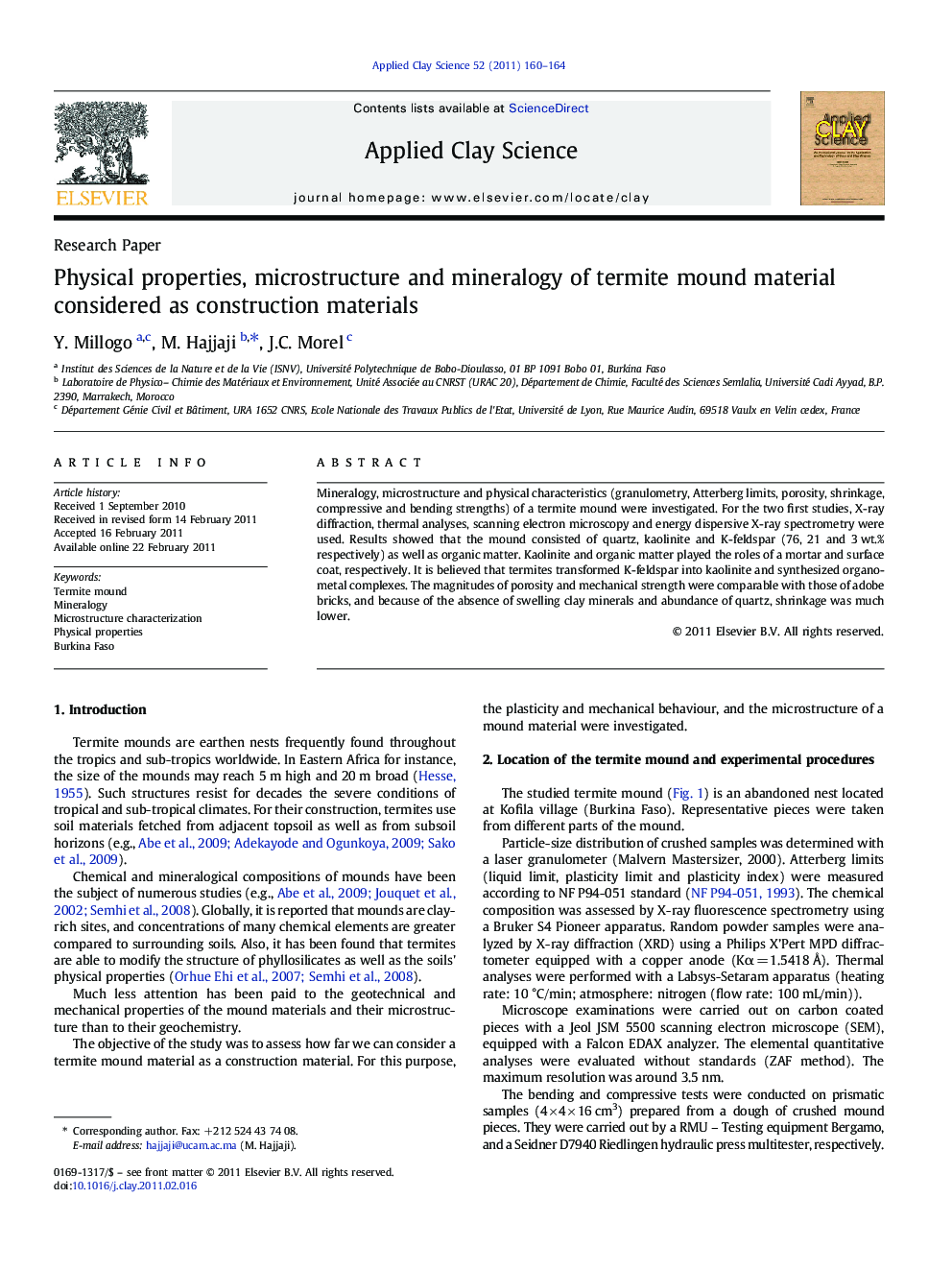| Article ID | Journal | Published Year | Pages | File Type |
|---|---|---|---|---|
| 1695487 | Applied Clay Science | 2011 | 5 Pages |
Mineralogy, microstructure and physical characteristics (granulometry, Atterberg limits, porosity, shrinkage, compressive and bending strengths) of a termite mound were investigated. For the two first studies, X-ray diffraction, thermal analyses, scanning electron microscopy and energy dispersive X-ray spectrometry were used. Results showed that the mound consisted of quartz, kaolinite and K-feldspar (76, 21 and 3 wt.% respectively) as well as organic matter. Kaolinite and organic matter played the roles of a mortar and surface coat, respectively. It is believed that termites transformed K-feldspar into kaolinite and synthesized organo-metal complexes. The magnitudes of porosity and mechanical strength were comparable with those of adobe bricks, and because of the absence of swelling clay minerals and abundance of quartz, shrinkage was much lower.
Research Highlights► The mound material consisted of conventional building components. ► Properties of the mound were similar to those of some manufactured earth blocks. ► The absence of swelling clay minerals and wall coating contributed to the mound resistance.
